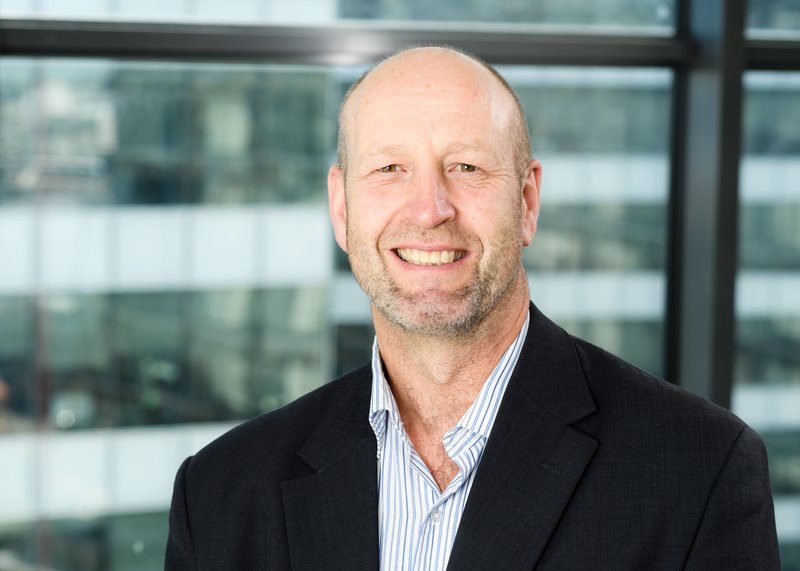12 Apr 2022
Don Cleland has been a Professor of Process Engineering at Massey University since 2018. And before this, was the Head of the School of Engineering and Advanced Technology for 10 years. Find out about Don's career highlights, what Covid-19 taught him, and more.
What is your role at Massey University?
Since 2018 I have been Professor of Process Engineering at Massey University. Prior to 2018, I was also Head of the School of Engineering and Advanced Technology for 10 years.
Who or what inspired you to become an engineer?
I enjoyed all of the sciences and maths at school, and so I sought to do a degree which built on all of these subjects. Also, my brother had done an engineering degree and had really enjoyed it and the opportunities it generated. That led me to a first degree in biological process engineering (called Biotechnology at the time; the meaning of Biotechnology has since narrowed) and then later on I focussed on food process engineering at the postgraduate level.
Tell us about three of your career highlights?
As an academic, my first highlight was a sabbatical leave that I spent working for the Pillsbury Company in Minneapolis-St Paul in 1991/92. It was a great opportunity to learn about how the food industry operates but also how my research might be helpful to industry.
During my time at Pillsbury I got to visit most of their plants across more than 10 US States to audit their refrigeration systems. I got to see one of the last Freon-12 corn immersion freezers just before it was scrapped as a result of the Montreal Protocol. I also spent a lot of time based at a plant that had six pizza manufacturing lines; each line could produce 600 pizzas per minute as the plant supplied all of the US for the Pillsbury-owned brand.
Further, I remember the perk of unlimited product samples being a diet challenge when based at the Haagen-Dazs ice cream manufacturing facilities. Overall, I felt my audits had a positive effect on the energy efficiency of Pillsbury businesses, and I learnt a lot about putting theory into practice.
My second highlight was contributing to the development of water heating heat pumps. This started in the 1990’s when a Masters student worked with an Auckland-based business to design and build an early prototype 100 kW trans-critical CO2 heat pump.
The heat pump could heat water from 20oC to 95oC whilst simultaneously chilling glycol to -5oC with greater than 250% efficiency. However, the leakage of CO2, due to the limits of the compressor technology available at that time, limited its operating time and ultimately its commercial potential. Now, more than 20 years later, trans-critical CO2 heat pumps have become mainstream internationally.
More recently, I have assisted in development of heat pumps for domestic water heating via businesses in the Manawatu and Wellington. One of these, using a unique cascade design that delivers 60oC water with greater than 300% seasonal efficiency, is now commercially available in New Zealand. It is satisfying to have made some contributions to these technology developments.
My third highlight is working with and seeing the progress of undergraduate and postgraduate students as they grapple with aspects of engineering in a New Zealand context.
In particular, I have enjoyed delivering the Cost-Effective Refrigeration course to more than 600 industry participants over more than 30 courses since the mid-1980’s. In more recent course offerings, we have allowed undergraduate students to attend.
The interaction between the students and the more experienced industry practitioners has been very positive for both groups.

Don Cleland
Over the last two years you have had to change the way that you teach engineering due to Covid. What have you learnt about yourself and your students in the process?
During Covid, my teaching has been restricted to courses undertaken by industry-based students upgrading their technical knowledge in specialist areas. Face-to-face contact courses were replaced by recording of lectures from pre-Covid offerings plus the normal on-line resources. The main lesson for me is that the loss of opportunities to network and interact with others in the course is very difficult to achieve on-line and there is no substitute for some face-to-face activities. This was especially the case for industry-based students who found scheduling study time hard to prioritise given the competing responsibilities of normal work duties and family that both often increased due to Covid.
What would be your dream student project to supervise?
My dream project would be development of a new refrigeration or heat pump technology for industry that delivered an end-user need for heating or cooling cost-effectively with high energy efficiency and low environmental impact. Ideally the project would include identifying the need, selecting and designing the new system, building a prototype or full-scale unit, and testing its performance in-situ.
Why are you a member of Engineering New Zealand?
I believe that professional societies have a critical role to: uphold standards, enable networking with other professionals, to provide continuing professional development opportunities during career progression, as well as to advocate for the profession. Hence, I am a member of four national and international societies relevant to my expertise including Engineering New Zealand. I also feel that membership provides an opportunity to give back to the profession, particularly through support of younger members.
If you could meet any engineer in the world, who would it be and why?
I would cheat and meet with Leonardo De Vinci, James Watt and Elon Musk together. I would want to understand how each of them was able to be so creative, innovative and successful, albeit in very different eras with different constraints and knowledge bases.
What is your favourite piece of engineering in Palmerston North?
This was a hard choice with many interesting examples including the vacreator for cream deodorisation, the continuous air-blast meat carton freezer, the Baker no-tillage direct drill, the Magritek NMR, the CheddarMaster cheese maker, PEC automated fuel pumps, SpiderTracks aircraft tracking systems, the C-Dax pasture meter, and the New Zealand Pharmaceuticals process for producing steroid precursors from bile. These were all developed in the Mānawatu. However, my favourite is the continuous beer fermentation system developed for Dominion Breweries by Morton Coutts and first installed in a brewery in Palmerston North in the late 1950’s.
While the brewery no longer exists, the technology is still used in a number of breweries around the world. Double strength beer is produced continuously in a two tank fermentation system that can run for many months before cleaning is required. It is a very clever and cost-effective beer production system. However, the technology does limit the diversity of recipes and flavours that can be produced, which is now a significant constraint on its use, given the modern emphasis on beer quality rather than quantity.







